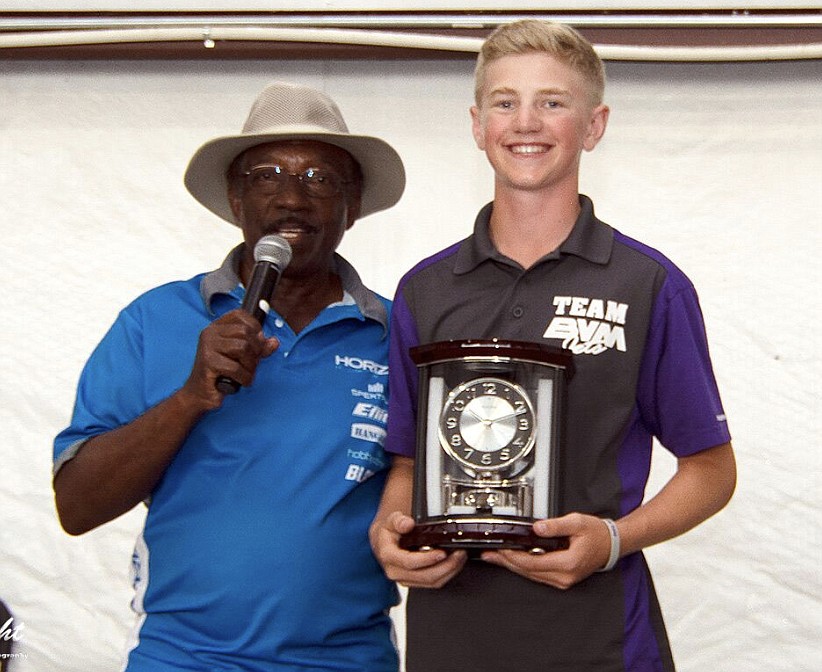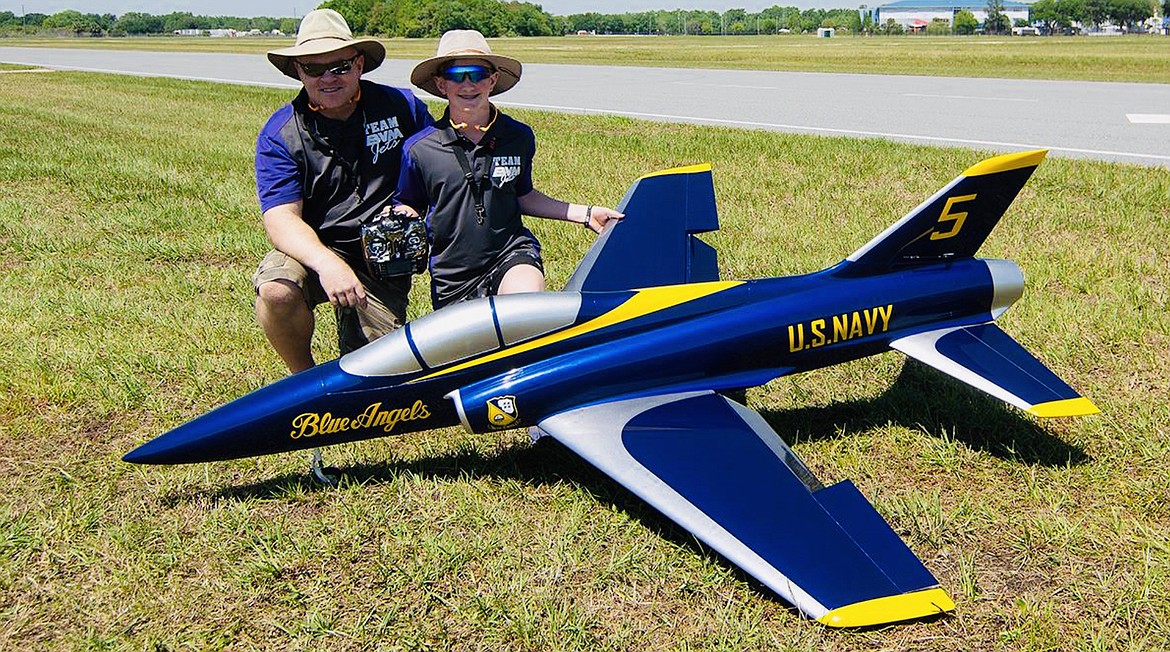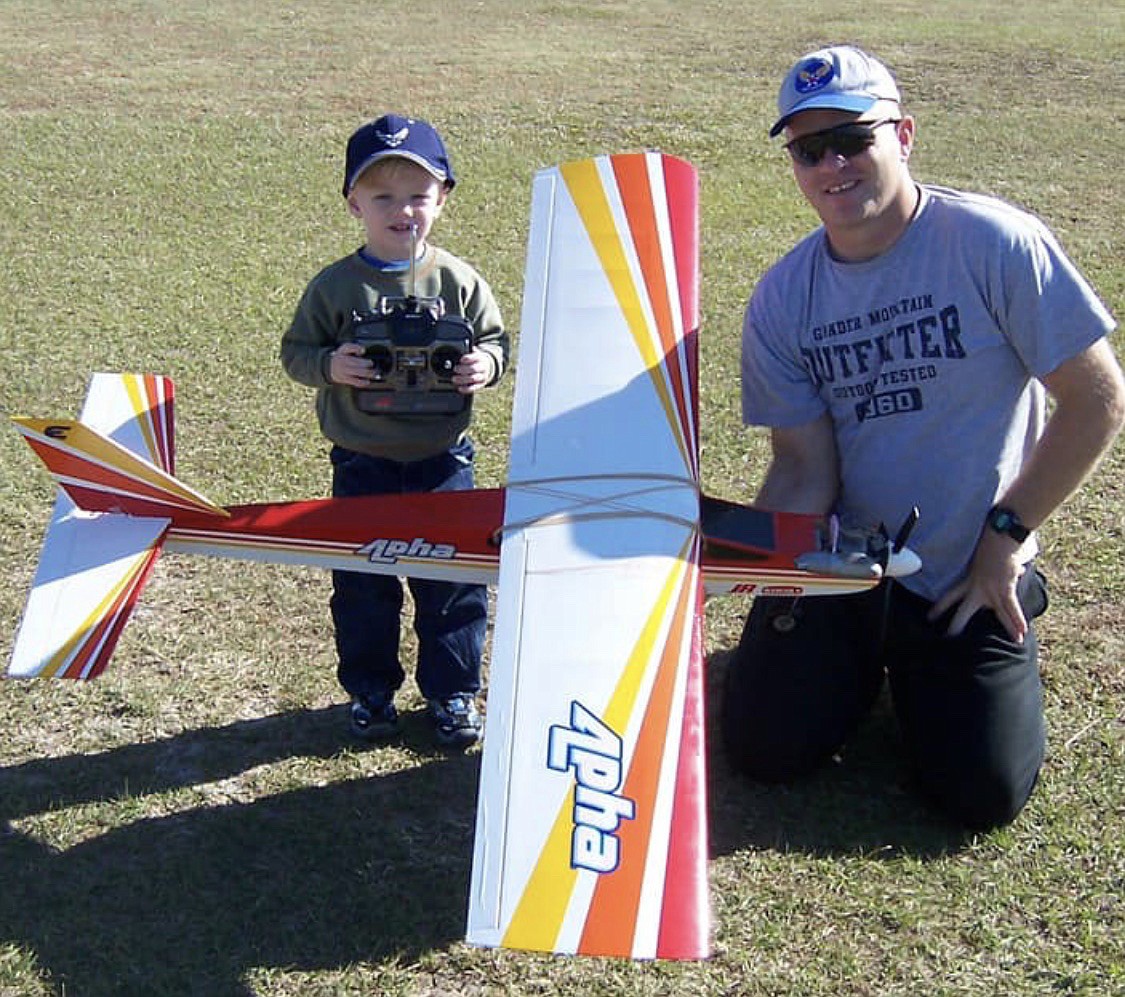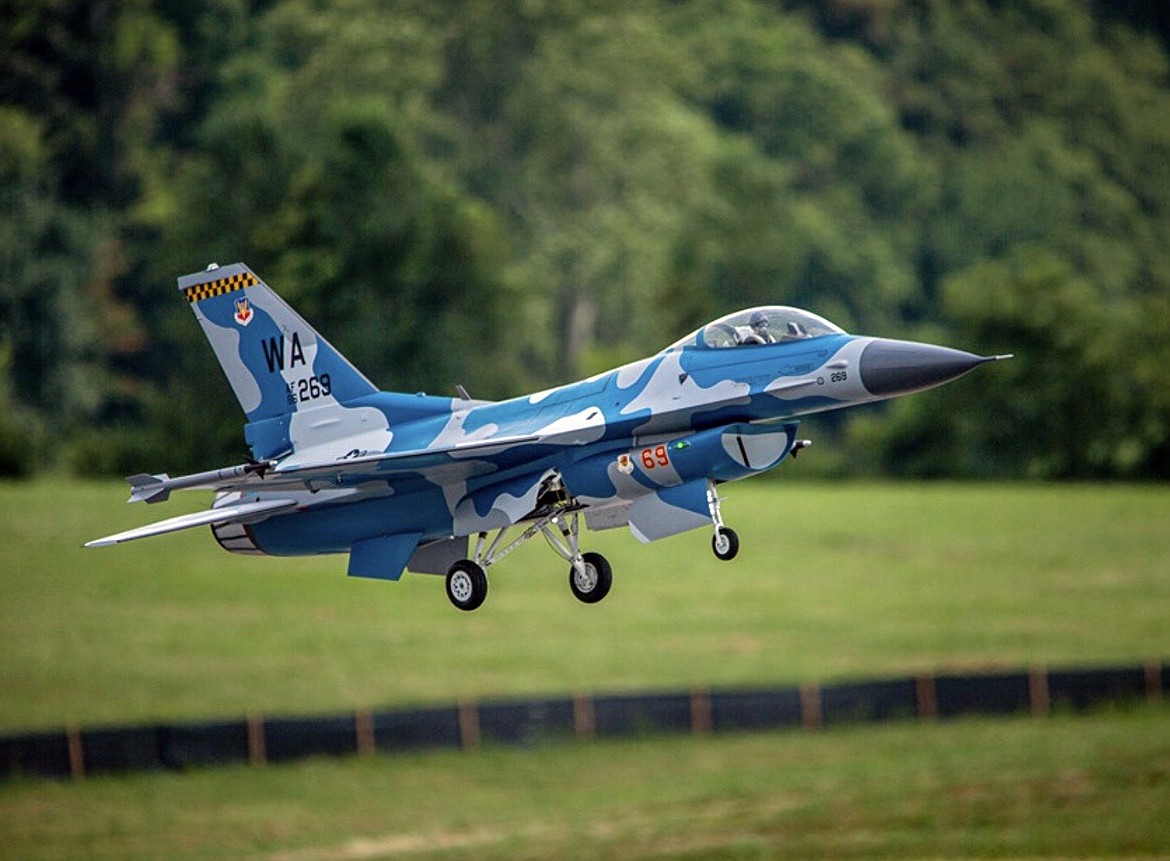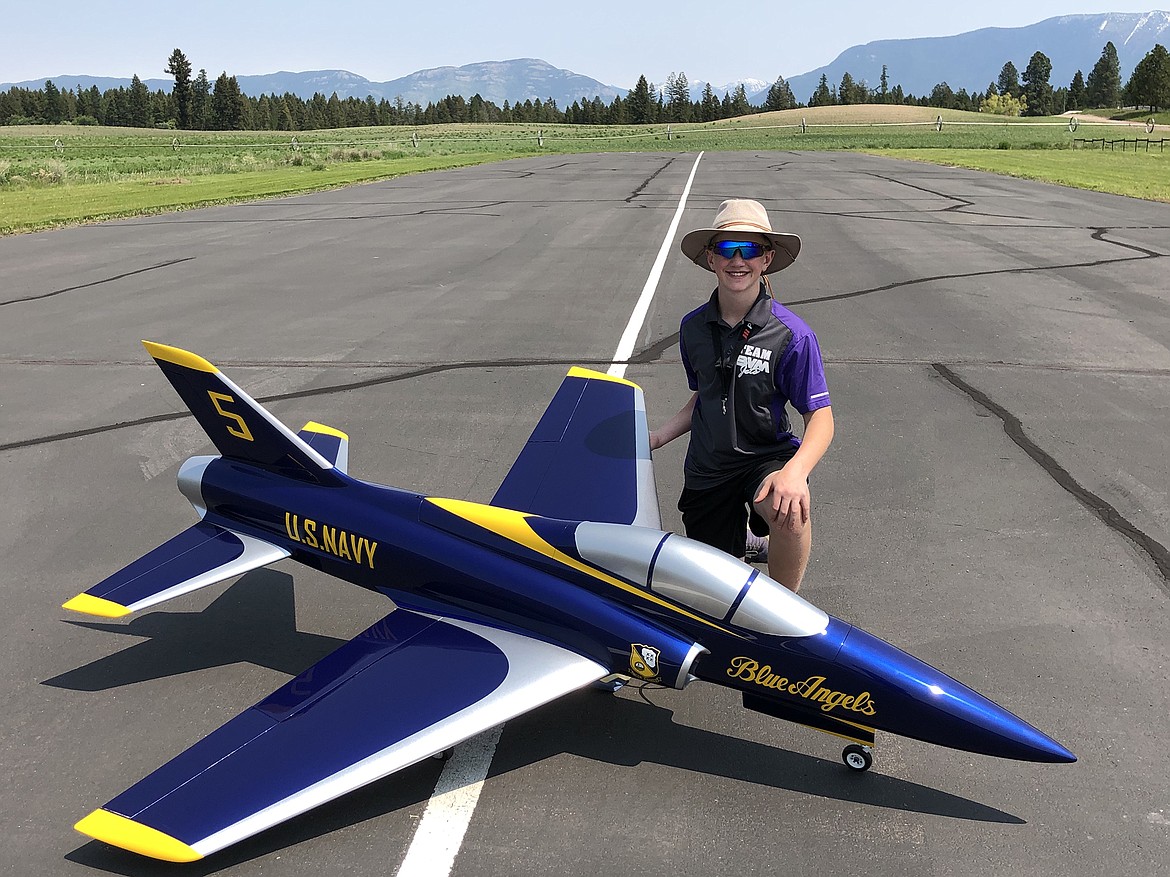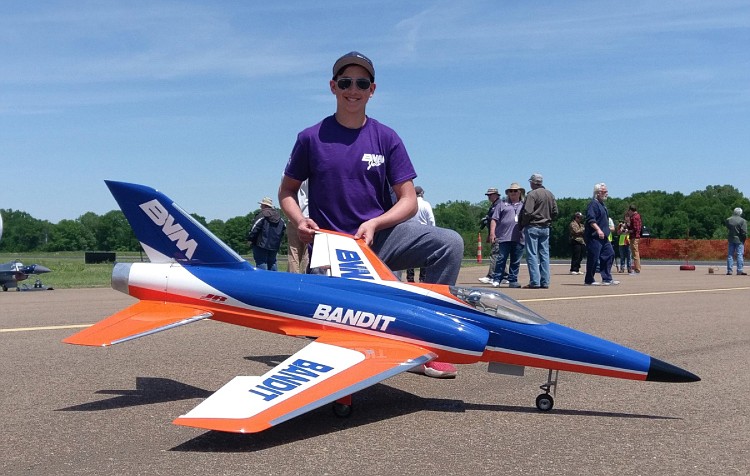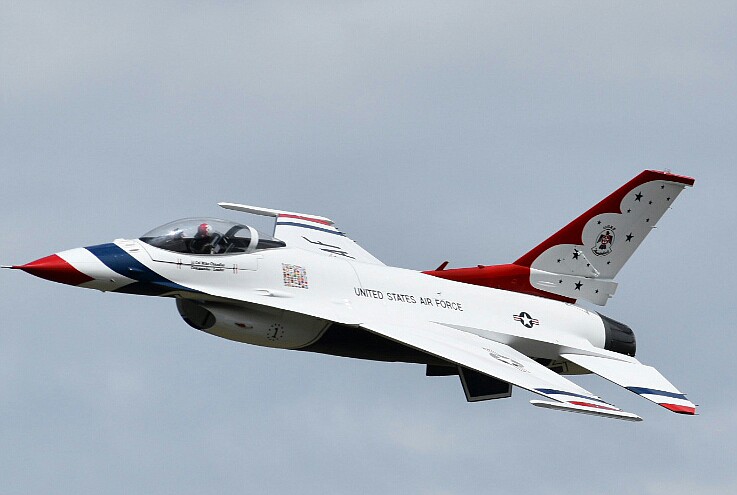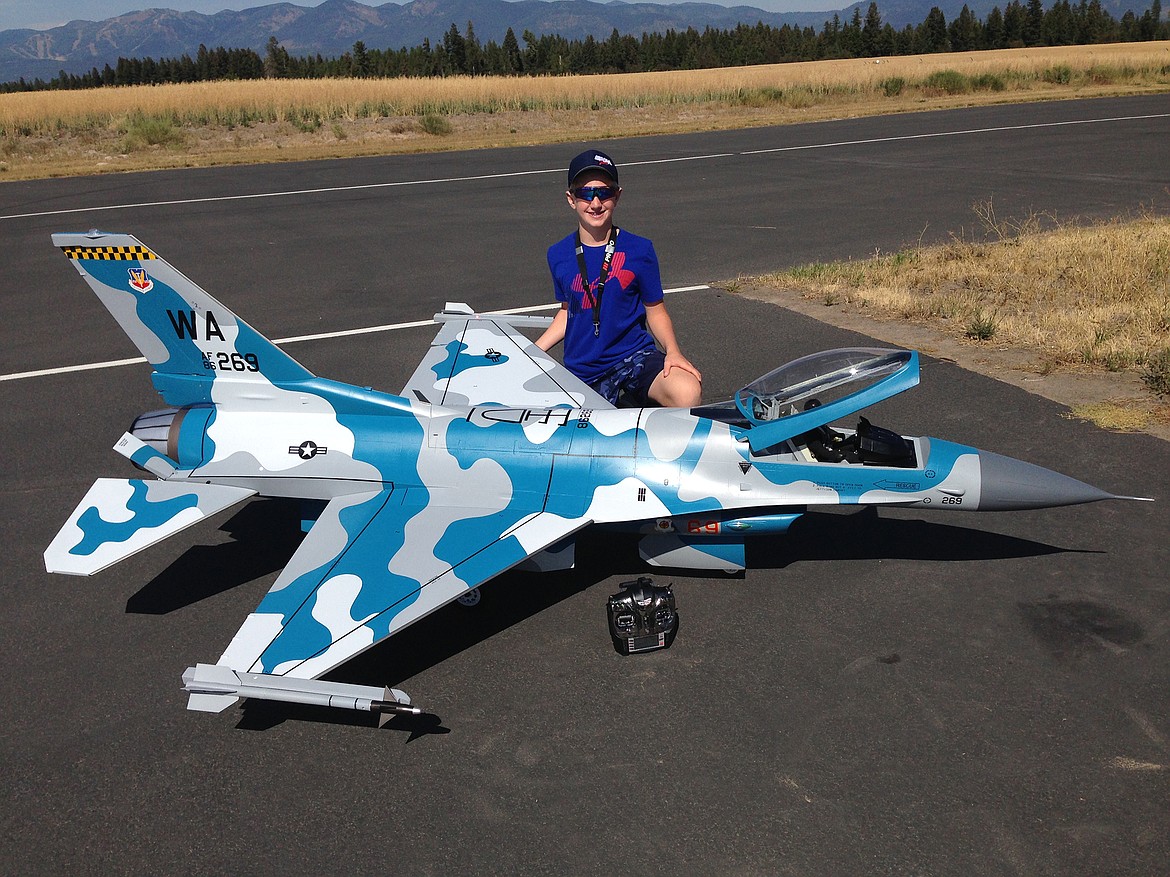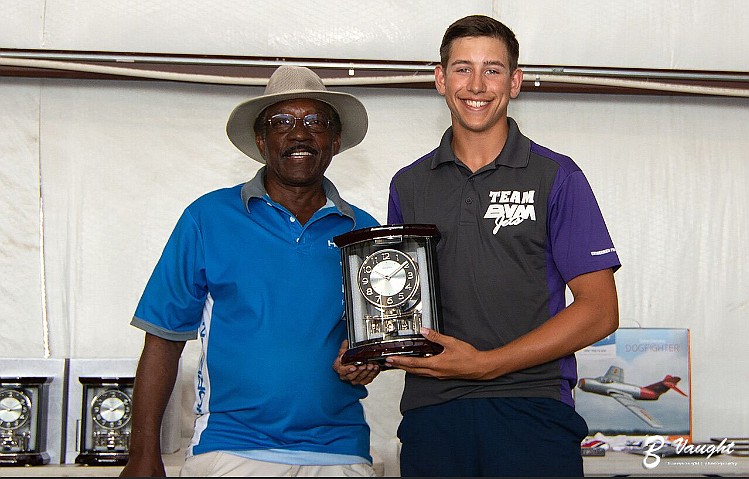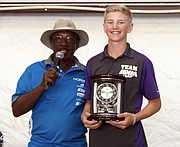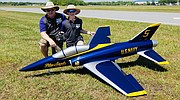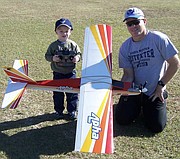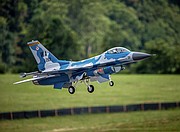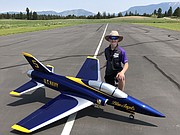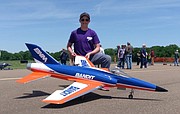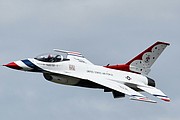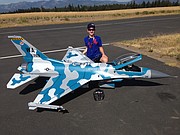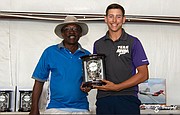Two local teens taking the world of model jet competitions by storm
The engines roar as the jets cut through the air just off Whitefish Stage Road north of Kalispell. The two young pilots show exceptional skills as they maneuver their fighter craft through a series of tricky stunts. Their F-16 fighters are just like the real thing, but are one-fifth the size.
Sophomores at Glacier High School, Josh Clark, 15, and Patrick Rohrbach, 16, have been taking the model jet community by storm recently as two of less than 10 certified pilots of the craft in the country under the age of 16. Traveling to shows around the country to showcase their building and flying skills, they have earned prestigious awards at nearly every stop and have already secured positions as representatives for their favorite model company, Florida-based Bob Violett Models.
“It’s quite an honor to be part of the team because there are less than 50 reps worldwide,” Clark said. “We just have to be willing to help others with questions about their models and be able to fly our models well at events.”
“They make our favorite jets, so it is great to be able to represent them,” Rohrbach added.
For both boys, getting into the world of model jets was a step in their fathers’ footsteps. For the Clark family, the tradition goes back even further.
Josh’s grandfather, Addison Clark Jr., began building model planes in the 1960s before his career as a Navy carrier pilot. After moving to Kalispell and becoming the chief of police, Addison Clark Jr. began flying model planes with his son, Josh’s father Addison Clark III, in the 1980s.
It was at the local flying field one afternoon that the Clarks ran into another RC flier, Kelly Rohrbach. The friendship was instant.
Kelly and Addison Jr. continued to fly planes together even as Addison III joined the Army and built a career as a helicopter pilot. The two got into model jets when they came onto the RC scene in the 1990s, passing their skills and knowledge on to Addison III.
THEN CAME the next generation of RC pilots.
Josh said some of his earliest memories are accompanying his father to events and watching him fly his model jets while playing with his own small Air Hogs aircraft. As he got older, Josh took even more interest in his father’s hobby.
“I really liked the sound of the jets and how fast they could fly,” he said. “I wanted to learn how to fly them so I could be just like my dad.”
Josh received his first trainer plane when he was less than 3 years old, learning to fly it with his dad with the help of a tethered “buddy box” control system. At age 7, he learned to fly and land a model T-28 and got his first electric ducted fan (EDF) jet when he was 9 before advancing to turbine jets.
Patrick took a similar path, starting with an Air Hogs helicopter at age 3 while hanging around his father’s workshop.
“My dad was always working on planes for other people or building his own,” Patrick remembered. “I would go out and help him whenever I could.”
Patrick’s first plane was an EZ-2, which he learned to fly with his father with the help of a buddy box at age 4. After learning to fly that plane on his own, Patrick advanced to a T-28 and an EDF before moving on to turbine jets.
Josh and Patrick would fly together whenever Josh’s family came back to Kalispell to visit his grandfather, but it was not until Addison III retired and moved his family back home in 2015 that the boys really started to fly together on a regular basis.
The two soon earned their Academy of Model Aeronautics turbine waiver, which involves demonstrating to an AMA contest director a proficiency in the operation of such jets, at ages 14 and 15.
AT UP to 55 pounds and 9 feet in length, the turbine-powered jet models are not toys. With some models costing upward of $15,000 and running on the same Jet-A fuel used by modern commercial airliners, a model turbine engine can run for as much as 25 hours before having to be serviced. With modern transceiver technology, Addison III described the range of the jets as “If we can still see them, then we can fly them.”
It was not long until Josh and Patrick’s skills with these jets caught the eye of Bob Violett Models, which made them their first youth representatives in the United States, once again following in the footsteps of Addison Jr, Addison III and Kelley, who have all also been reps for the company.
The boys are currently the only youth turbine waiver holders in the state on Montana and two of less than 10 people in the state who have secured the waiver.
THE TWO continue to pick up awards around the country, with Patrick recently earning the adult Top Gun award at the Jets over Kentucky event, while Josh was named Rookie of the Year at the Best in the West meet.
For Josh’s father, it is great to see the two friends excel in a hobby that he has enjoyed so much over the years. He enjoys spending time working on the jets and flying them, even though the hobby has changed quite a bit since he first got into it.
“Back 20 years ago, the jets came in a big wooden box with wood parts that you had to glue together and then fiberglass and paint. You had to run the electronics and plumb it for the fuel lines. It was quite an extensive process that could take as much as a year,” Addison III said. “These days, they build the PNP, or plug and play, kits where the planes come already painted with everything already installed. All you really have to do is bolt your turbine in and it really only takes a week or two. Things really have changed.”
No matter what changes the future brings to the RC world, the Clarks and Rohrbachs will continue to spend their free time taking to the skies.
“Some people have cars or Harley Davidsons in their garages. We have a few jets in ours that are always in various stages of being built,” Addison III said. “It is a lot of work, but it is also a lot of fun.”
Reporter Jeremy Weber may be reached at jweber@dailyinterlake.com.


